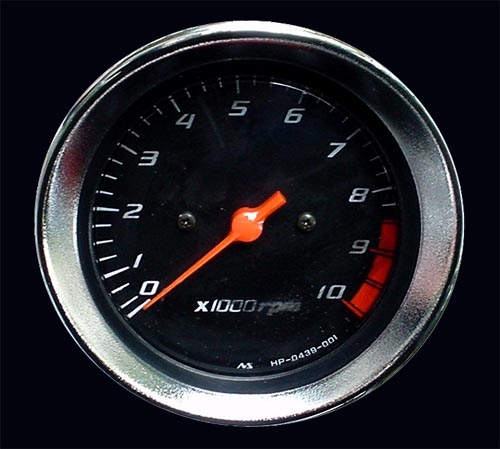
Long before the invention of the automobile, tachometers were used to measure the revolution of devices such as steam engines, water wheels and other machines. In the automotive world, tachometers monitor the engine's performance to prevent it from failing.
Race cars were the first automobiles to use tachometers, which allowed the driver to monitor the engine's performance before it reached critical levels where damage could occur.
A race car driver is not able to hear when his car is reaching maximum RPM (Revolutions Per Minute) because of the noise from the exhaust. The tachometer provides a visual reference point.
Each car engine has a unique maximum RPM limit. The red area on the tachometer marks that limit.
The first mainstream vehicles to have tachometers were high-performance sports cars in the 1950s. They were most likely to be driven fast or raced, so the tachometer on the dashboard was a useful visual indicator of RPMs.
Today, almost all cars are equipped with a tachometer, but they have been rendered useless by fuel injection and electronic ignition systems--in-car computers will not allow a car to operate past the red area on a tachometer.